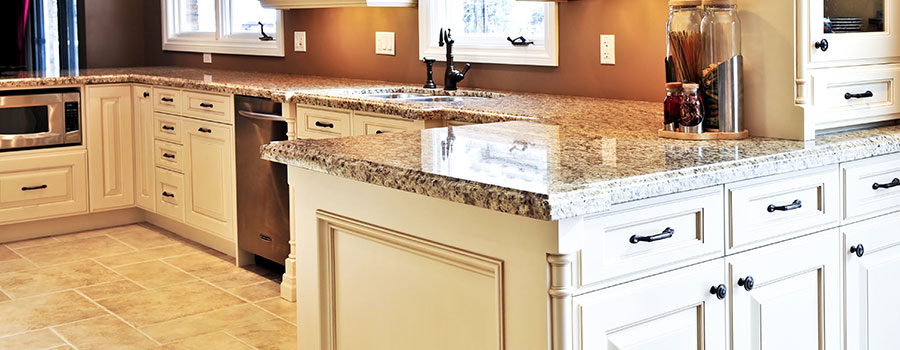Whether it’s taking a bathroom out of action or sleeping in the living room, home remodeling can be stressful, but it doesn’t have to be disastrous. Surviving a remodeling is possible using the tips given below:
Have a solid plan
The only way to survive a kitchen makeover or condo remodel is to plan. You should prioritize structural projects (such as replacing your roof, creating new walls, or improving fundamental or electrical systems) before tackling cosmetic jobs like painting.
Assume you are staying in your home during the renovation. In that situation, you should communicate with your contractor about the building timetable so that you can design a strategy to eliminate clutter and avoid occupying their construction area.
Ask your contractor for recommendations and collaborate to make the process smooth for everyone.
Clearly define the scope of the proposed job. Online resources will help you create a clear vision of the appearance you want. You can explore images and add your favorites to ideabooks to share with family members and professionals.
Also, consider visiting showrooms and suppliers to see product and finish samples, and take a tour of properties for sale in your region to get ideas about what you can realistically expect.
Have a daily routine.
Creating and sticking to a daily routine will help you keep organized during your remodel. It also allows you to prepare ahead and predict which days will be the most chaotic. For example, surviving a kitchen or bathroom remodel may require spending the weekend away with the kids if there is rewiring or appliance downtime.
The more prepared you are, the less stressful things will be. Of course, disturbance to your and your family’s lives will be part of the process, but there are easy steps you can take to minimize inconveniences, such as sticking to a timetable and requesting one from your contractor.
Be ready for dust in the house.
To survive a kitchen, bathroom remodel, or any other renovation, you must be mentally prepared for chronic dust. Even after professionals have cleaned the scene, construction dust will most likely be still present.
A wise way to do it is to pack up stuff you won’t need and invest in proper storage while renovating.
It’s also a good idea to use heavy-duty plastic drop cloths to block the doorways between your temporary living and renovation area and to tape up vents to prevent dust from entering your home’s air system.
If there is a potential that the item being worked on contains lead paint, you must follow the EPA Renovation, Repair, and Paint Guidelines.
You can also use magnetic vent covers to keep dust out of non-renovated areas of your home. Another method to consider is using plastic drop cloths to seal the entrance between the remodeling area and your living space.
You should also ensure your contractor and all personnel understand which areas of your home are off-limits.
You need a private location where you don’t have to worry about staff snooping, tampering with your belongings, or invading your space. Make it clear where they may and cannot go.
Have a budget and stick to it.
If you want to survive renovations, begin with “the money.” A home remodel’s finances are often significant, and your budget can balloon during renovation if you don’t have a disciplined approach.
Once you’ve confirmed your plans with your contractor, ensure your budget is finalized.
Remember that construction errors, erroneous cost projections, and homeowner decisions can all cause the budget to balloon. While the first two may be beyond your control, the latter is your responsibility.
To keep your budget in check, choose locally available materials. Remember that if you import your materials, you will pay more for them. There is also a high likelihood of your budget getting out of control.
To avoid this, always try to work with locally available materials.
You also should set a fair budget from the start. Make sure you understand all of the choices you will have to make. Keep a tight check on your projected expenses against what you choose.
If your partner or spouse is involved, agree on a suitable budget for each pick. Make decisions together based on money, not emotion.
The search for shiny goods like tiling, countertops, and appliances can be perplexing, puzzling, and alluring. You can also buy items that you didn’t intend.
When you have a budget set before going into the showrooms, you can inform the sales rep what it is so they don’t show you products that are out of your price range.
By avoiding goods that are more expensive than your budget, you can prevent the negative sentiments that come with having to “settle” for lower-cost options.
Regularly monitor your project.
You should visit or inspect the remodeling site regularly to stay informed and ensure your satisfaction with the job. The optimum times to do this are before or after work.
Remember that a noisy, bustling construction site is not conducive to concentrated concentration.
You also should arrange frequent, formal meetings or catch-up on-site with important players to review progress, discuss difficulties that have arisen, and plan out decisions that must be made.
These meetings are often completed every week and should be documented, with the results distributed to all stakeholders.
Avoid making changes in the middle of the project.
This is where your preparation and research will pay off. Even slight adjustments can result in cost overruns and schedule delays, quickly spiralling out of control and becoming impossible to manage.
The more decisions you make ahead of time, the faster you can order materials and get work done.
You will still be inundated with detailed decisions to make along the route, all of which will be marked as urgent. Dealing with them should be easier if you have a clear vision for your home.
To avoid making changes in the middle of the project, ensure you have a clear plan and always go over it with your home addition companies DC.



